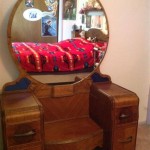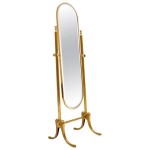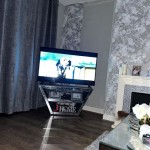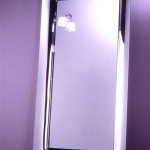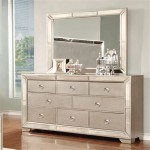Corner Mirror for Bathroom: A Comprehensive Guide
Bathroom mirrors are essential for daily grooming routines. A corner mirror, specifically designed for corner installation, offers a space-saving solution while providing ample reflective surface. This article explores the various aspects of corner mirrors for bathrooms, including types, materials, installation methods, and maintenance tips.
Types of Corner Bathroom Mirrors
Corner bathroom mirrors are available in various styles to suit different bathroom aesthetics and functional needs. Common types include:
Framed Corner Mirrors: These mirrors feature a frame made of various materials like wood, metal, or plastic. The frame adds a decorative element and can complement the overall bathroom design. Framed mirrors are available in a wide range of styles, from traditional to contemporary.
Frameless Corner Mirrors: Frameless mirrors offer a sleek and minimalist look. The absence of a frame creates a sense of spaciousness and allows the mirror to blend seamlessly with the bathroom walls. These mirrors are particularly popular in modern bathroom designs.
Tri-View Corner Mirrors: Tri-view mirrors feature three panels hinged together, allowing users to view themselves from multiple angles. This design is particularly useful for tasks like shaving or applying makeup. The adjustable side panels can be folded inward when not in use, saving space.
Medicine Cabinet Corner Mirrors: These mirrors combine the functionality of a mirror with storage space. The mirrored door of the cabinet conceals shelves for storing toiletries and medications. Medicine cabinet corner mirrors are a practical solution for maximizing storage in smaller bathrooms.
Lighted Corner Mirrors: Illuminated corner mirrors provide enhanced visibility for grooming tasks. These mirrors can feature integrated LED lights around the perimeter or backlighting. Some models offer adjustable lighting levels and color temperatures to suit individual preferences.
Materials and Construction
The materials used in the construction of a corner mirror impact its durability, aesthetics, and resistance to moisture. Common materials include:
Glass: The primary component of any mirror is the glass. High-quality mirrors utilize float glass, known for its smooth and distortion-free reflection. Some mirrors incorporate silvering with a copper backing and a protective paint coating to prevent corrosion in the humid bathroom environment.
Frame Materials: Frame materials vary widely, including wood, metal, plastic, and composite materials. Wood frames offer a classic look, while metal frames provide a modern touch. Plastic and composite frames are often chosen for their moisture resistance and affordability.
Mounting Hardware: Mounting hardware should be durable and resistant to corrosion. Stainless steel screws and anchors are commonly used for secure installation.
Installation Methods
Installing a corner bathroom mirror involves several steps. While some mirrors come with pre-attached mounting hardware, others require separate installation. General installation steps include:
Measuring and Marking: Accurate measurements are crucial for proper placement. Mark the desired location on the wall, ensuring the mirror is level and centered in the corner.
Installing Mounting Hardware: Depending on the mirror and wall type, appropriate mounting hardware should be used. This may involve drilling pilot holes and using wall anchors for added stability.
Attaching the Mirror: Carefully hang the mirror on the mounting hardware, ensuring it is securely fastened. Some mirrors may require additional screws or clips for added support.
Sealant Application (Optional): Applying a bead of silicone sealant around the edges of the mirror can help prevent moisture from seeping behind the mirror and causing damage.
Maintenance and Cleaning
Proper maintenance can prolong the life of a corner bathroom mirror. Regular cleaning helps maintain its reflective surface and prevent the buildup of water spots and grime.
Cleaning Solutions: Use a mild glass cleaner and a soft cloth to clean the mirror surface. Avoid abrasive cleaners, which can scratch the glass. A mixture of water and vinegar can also be used as a natural cleaning solution.
Preventing Moisture Buildup: Adequate ventilation in the bathroom helps prevent excessive moisture buildup, which can damage the mirror and surrounding walls. Running an exhaust fan during and after showers can significantly reduce humidity levels.
Inspecting Mounting Hardware: Periodically inspect the mounting hardware to ensure it remains secure. Tighten any loose screws or replace any damaged components to prevent the mirror from falling.
Selecting the right corner mirror enhances both the functionality and aesthetics of a bathroom. By considering the various types, materials, installation methods, and maintenance tips outlined in this article, individuals can make informed decisions when choosing a corner mirror that best suits their needs and preferences.

Space Saving Bathroom Corner Mirror Cabinet 600mm Tall Bilbao

Single Door Corner Bathroom Mirror Cabinet Cupboard Stainless Steel Wall Mounted

Tall Corner Bathroom Mirror Cabinet With Shelves 900mm Reims

Corner Bathroom Vanity With Mirror China Cabinet Made In Com

Krugg Reflections Modular Corner Illuminated Led Bathroom Mirror Dna Com

20 Beautiful Corner Vanity Designs For Your Bathroom Housely Sink Powder Room Decor

Sworth Corner Mirror Cabinet Graphite Victorian Plumbing

Corner Sink And Mirror In Small Bathroom Contemporary San Francisco By Bill Fry Construction Wm H Const Co Houzz

Elegant Corner Cabinet Wall Mounted 600 X 300 Mm Bathroom Storage Cabinets Single Door With 3 Shelves Stainless Steel

Extra Tall Reims Single Door Corner Mirror Cabinet 1200 X 380


